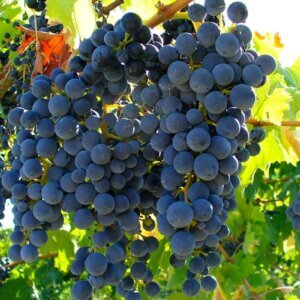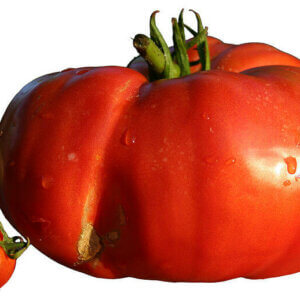
- Purpose: Eggs, Ornamental
- Eggs: White
- Egg Size: Small
- Color: Gold
- Comb Type: Cup-shaped
These rare birds have nothing to do with The Princess Bride or the flower that seems to share their name. Rather, their name likely comes from the buttery golden color of the hen’s necks and the breed-specific, cup-like comb that sits atop their heads like a crown.
Historically, Buttercups were used for egg production on their native island of Sicily (so, at least a little bit to do with The Princess Bride). Promoters who shipped them to the rest of the world touted their excellent egg production. Buttercups have turned out to be just fair layers, but after taking a glance at their looks, it is easy to see why the primary use of this breed shifted over to ornamental in modern times.
The Beginner’s Guide to Raising Chickens
Thinking about getting your next flock of chickens?
Quit searching around the internet and take a look at our complete course to Raising Chickens.
Our instructor Wren gives you 22 key lessons over nearly 3 hours of videos covering everything you need to know to get started with your first flock, caring for chickens, keeping them healthy, diagnosing problems, and more.
Characteristics
Visually, a Buttercup chicken is quite a lovely sight. First, there is the distinctive comb that lends the breed its name–two single combs fused together at the front and back of the head. Cascading down from his bright red crown and white earlobes, the roosters have gleaming copper necks, glossy green tails, and willow-green legs and feet.
It is not hard to imagine how these chickens got the nickname “flowerbirds.” The hens are lovely as well, though they look quite different–another unique feature of the breed. Golden yellow neck feathers swirl down from her petite crown and fade from an autumn-orange body to a russet brown tail, all spangled with black. If you like the looks and just not the size, there’s a bantam variety as well.
Buttercups are good, active foragers and thrive in warmer climates. They also mature quickly, and are hardy in nature, so if you give them a warm enough place to live, they can take care of themselves.
These Warm-Weather Birds Will Not Be Contained
Like most fowl developed in the warm, summery Mediterranean region, these birds are not tolerant of cold climates. They also are totally intolerant of being confined, so combine that with their light frame and good flying abilities, and you have a chicken that will fly the coop any chance it gets.
The best situation for these flighty, active birds is to let them free-range and happily forage under the sun. Buttercups require high fences to keep them safe, and though they are beautiful, their high-strung, human-avoiding nature may be a bit frustrating for the novice chicken keeper.
What’s The Yield?
Primarily known as ornamental birds in modern times, Buttercups still produce a passable amount of eggs for the small-scale homesteader. You can expect around two small, white eggs a week. These busy chickens fall to the smaller side of the size spectrum, with hens reaching 4 pounds and roosters 5 pounds.
If you want to get into the show ring with your fancy Sicilian chickens, read up on ideal comb conformation. The most desirable shape is a fully-fused cup, resembling a crown, with equally-sized points encircling it. Lesser combs are often unattached at the front, resulting in a head display that looks more like deer antlers.
Breeding for comb perfection will be a labor of love–it takes more than a year for the comb shape to fully mature.
Fun Facts
The current American lines of Sicilian buttercup chickens are all descended from a single year’s worth of imports in 1892. The differences between the native stock and the current American versions are significant enough to be noticed.
It’s our opinion that those interested in the preservation and curation of the breed should spend some time researching the indigenous Sicilian fowl that gave rise to the current breed. Though the Standard of Perfection currently only allows for one coloration, the population of Sicilian Buttercup chickens worldwide is more diverse than first glance would imply.
For more in-depth information on the breed, check out Janicki Buttercups (a breeder deeply interested in improving the breed) or the American Buttercup Club.
Photos of Sicilian Buttercup Chickens
Resources
- How to Care for Your Sicilian Buttercup Chickens, Chicken Coop Guides
- Sicilian Buttercup Chicken Breed Information, Chicken Heaven On Earth
- Sicilian Buttercup Bantams Details, Purely Poultry
- Sicilian Buttercups, Dare 2 Dream Farms
- Sicilian Buttercup Chickens, Hobby Farms
- Buttercup Chicken, The Livestock Conservancy
- Sicilian Buttercups, Feathersite
- Poultry Breeds – Buttercup Chickens, Oklahoma State University Breeds of Livestock, Department of Animal Science
- Raising Sicilian Buttercups in America, Countryside Daily
- Sicilian Buttercup Chicken is a Rare Mediterranean Breed, Raising Chickens
- About the Breed, American Buttercup Club
- Sicilian Buttercup, My Pet Chicken
- Sicilian Buttercup, Backyard Chickens
- Sicilian Buttercup Chicken Breed Information, Roy’s Farm
- About The Breed, Janicki Buttercups









































